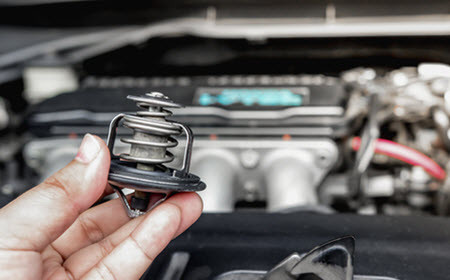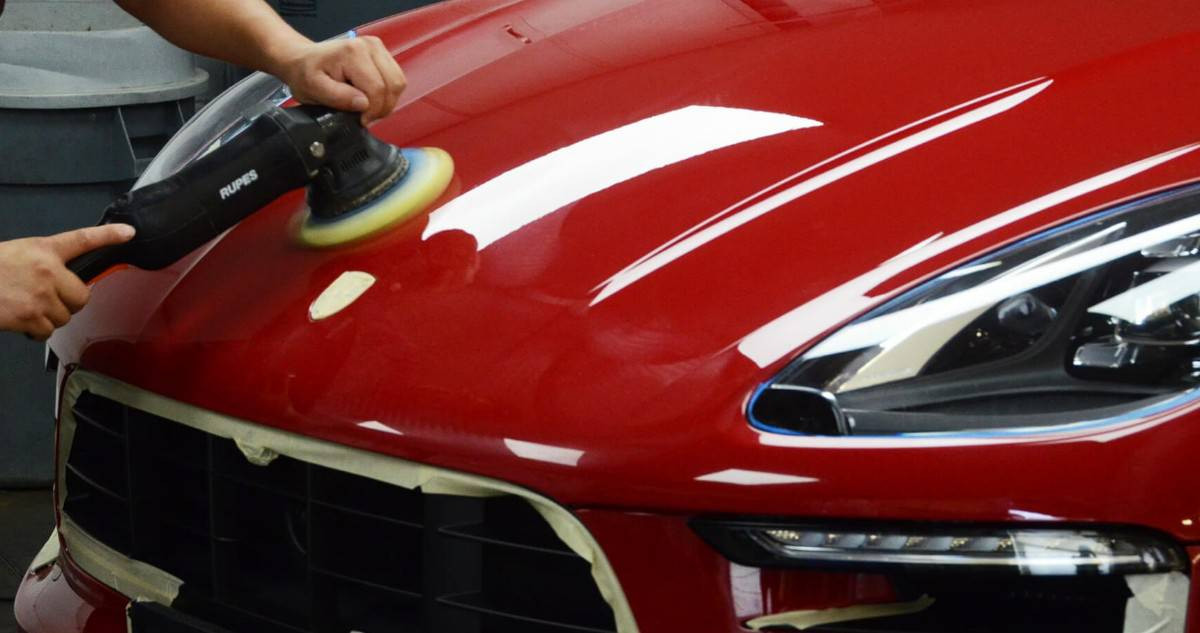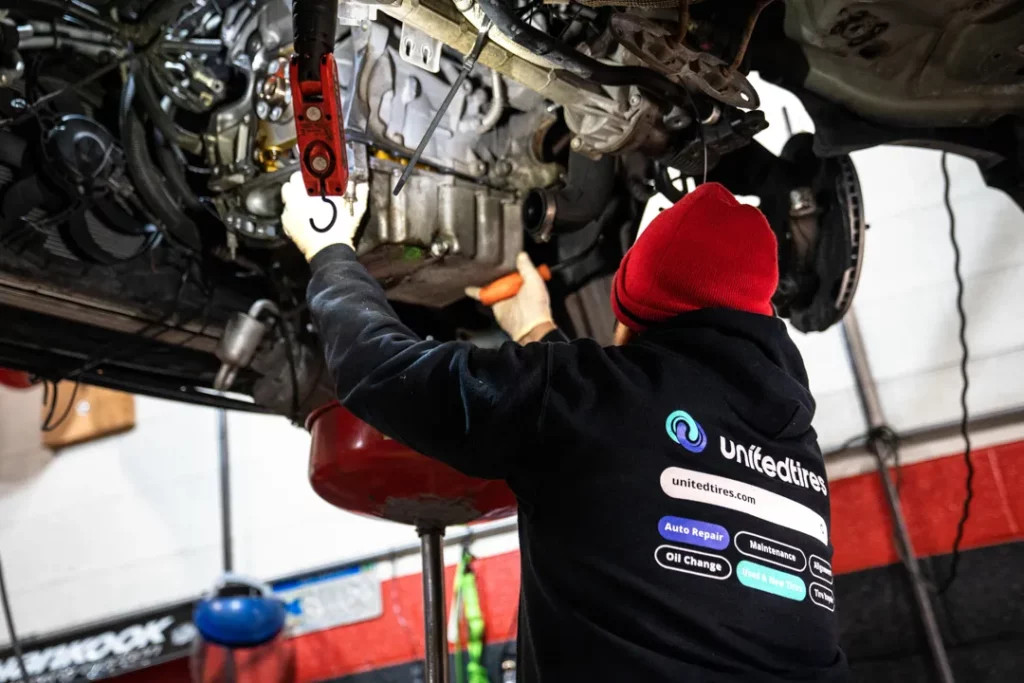How To Fix Electric Windows On A Car Easily
Is your car’s electric window stuck? Learn how to fix electric windows on a car with CARDIAGTECH.NET’s comprehensive guide. Our expert tips, troubleshooting steps, and tool recommendations will get your windows working smoothly again. Explore solutions for window malfunctions, automotive window repairs, and troubleshooting electric window problems.
1. Understanding Electric Window Systems
Electric windows offer convenience, but they can be frustrating when they malfunction. Knowing the components of an electric window system is crucial for effective troubleshooting. According to RepairPal, the average cost to fix a power window is between $232 and $312, including parts and labor. This highlights the value of diagnosing and potentially fixing the issue yourself.
- Window Switch: Controls the motor’s operation.
- Motor: Powers the movement of the window.
- Regulator: Mechanism that guides the window’s movement.
- Wiring: Connects the components and provides power.
- Fuses: Protect the circuit from overloading.
Understanding these parts allows you to pinpoint the source of the problem when your power windows refuse to cooperate. This foundational knowledge is crucial before diving into specific troubleshooting steps.
2. Diagnosing Common Electric Window Problems
Before attempting any fixes, it’s essential to diagnose the problem accurately. Here are some common symptoms and their potential causes:
| Symptom | Possible Causes |
|---|---|
| Window doesn’t move at all | Blown fuse, faulty switch, broken motor, wiring issue |
| Window moves slowly or erratically | Worn motor, damaged regulator, obstruction in the window track |
| Window makes grinding noises | Damaged regulator, debris in the window track |
| Only one window doesn’t work | Faulty switch, wiring problem specific to that window |
| All windows don’t work | Blown fuse, master switch malfunction |
| Window goes down but not up, or vice versa | Faulty switch, wiring problem |
Accurate diagnosis is key to avoiding unnecessary repairs. For instance, a simple blown fuse can mimic the symptoms of a failing motor. Take your time to identify the exact cause before proceeding.
3. Essential Tools for Electric Window Repair
Having the right tools on hand makes the repair process smoother and more efficient. Here’s a list of essential tools:
- Multimeter: To test voltage and continuity.
- Socket Set: For removing door panels and components.
- Screwdriver Set: Both Phillips and flathead.
- Panel Removal Tools: To avoid damaging interior panels.
- Wire Strippers/Crimpers: For repairing wiring.
- Electrical Tape: For insulating wires.
- Work Gloves: For safety.
- Safety Glasses: To protect your eyes.
- Flashlight: To see clearly inside the door panel.
Investing in quality tools from CARDIAGTECH.NET can significantly reduce repair time and ensure professional results. High-quality tools often come with better warranties and are designed for durability.
4. Step-by-Step Guide: How to Fix Electric Windows On A Car
Here’s a detailed guide to fixing common electric window issues. Remember to consult your vehicle’s service manual for specific instructions.
4.1. Checking the Fuse
A blown fuse is one of the most common reasons for electric windows to fail.
- Locate the Fuse Box: Consult your owner’s manual to find the fuse box location.
- Identify the Window Fuse: Check the fuse box diagram to identify the fuse for the power windows.
- Inspect the Fuse: Remove the fuse and visually inspect it. If the metal filament inside is broken, the fuse is blown.
- Test the Fuse: Use a multimeter to test the fuse for continuity. Set the multimeter to the continuity setting (usually indicated by a sound wave symbol). Place the probes on each end of the fuse. If the multimeter doesn’t beep or show continuity, the fuse is blown.
- Replace the Fuse: Replace the blown fuse with a new one of the same amperage rating.
- Test the Windows: Try operating the windows to see if they work.
:max_bytes(150000):strip_icc()/blowncarwindowmotorfuse-5b56477946e0fb003722caa1.jpg)
If the fuse blows again immediately after replacement, there’s likely a short circuit in the system. Do not use a higher amperage fuse, as this could cause a fire.
4.2. Testing the Window Switch
A faulty switch can prevent power from reaching the motor.
- Remove the Switch: Use a panel removal tool to carefully pry the switch from the door panel.
- Disconnect the Wiring: Disconnect the wiring harness from the switch.
- Test for Power: Use a multimeter to check for power at the switch connector. Set the multimeter to the DC voltage setting. Connect the black probe to a good ground (such as a bare metal part of the door frame) and the red probe to the power wire on the switch connector. You should see a reading of around 12 volts.
- Check the Switch Function:
- With the wiring harness still disconnected, use the multimeter to check the continuity of the switch in both the up and down positions.
- Set the multimeter to the continuity setting.
- Place the probes on the appropriate terminals for the up and down circuits.
- Press the switch in each direction and check for continuity. If there’s no continuity in either direction, the switch is faulty.
- Replace the Switch: If the switch is faulty, replace it with a new one.
- Test the Windows: Reconnect the wiring harness and test the windows to see if they work.
:max_bytes(150000):strip_icc()/carwindowsstucklockswitch-5b552491c9e77c005bb950ce.jpg)
4.3. Inspecting the Window Motor
If the switch is working, the motor may be the problem.
- Remove the Door Panel: Use panel removal tools to carefully remove the door panel.
- Locate the Motor: The motor is typically attached to the window regulator.
- Test for Power at the Motor:
- Use a multimeter to check for power at the motor connector while operating the window switch.
- Set the multimeter to the DC voltage setting.
- Connect the black probe to a good ground and the red probe to the power wire on the motor connector.
- Have someone operate the window switch while you check for voltage. You should see a reading of around 12 volts when the switch is activated.
- Check the Motor Ground:
- Use the multimeter to check the ground connection at the motor connector.
- Set the multimeter to the continuity setting.
- Place one probe on the ground terminal of the motor connector and the other probe on a good ground.
- You should hear a beep or see continuity on the multimeter.
- Test the Motor Directly:
- If the motor is receiving power and ground but not working, test the motor directly by bypassing the switch.
- Disconnect the motor from the regulator.
- Use jumper wires to connect the motor directly to a 12-volt power source. Be sure to observe the correct polarity.
- If the motor still doesn’t work, it’s likely faulty and needs to be replaced.
- Replace the Motor: Replace the motor if it’s not working.
- Test the Windows: Reconnect the wiring and test the windows.
:max_bytes(150000):strip_icc()/carwindowsdontworkvoltgauge-5b55faeac9e77c0037bc999a.jpg)
4.4. Examining the Window Regulator
The regulator is the mechanism that moves the window up and down.
- Inspect the Regulator: With the door panel removed, visually inspect the regulator for damage, such as bent arms or broken cables.
- Check for Obstructions: Look for any obstructions in the window track that could be preventing the window from moving freely.
- Test the Regulator Movement:
- If the motor is working but the window isn’t moving, the regulator may be the problem.
- Disconnect the motor from the regulator.
- Try to move the regulator by hand. It should move smoothly and freely. If it’s binding or stuck, it may need to be lubricated or replaced.
- Lubricate the Regulator: Apply a silicone-based lubricant to the regulator mechanism to help it move more smoothly.
- Replace the Regulator: If the regulator is damaged or cannot be freed up, it needs to be replaced.
- Reassemble and Test: Reconnect the motor to the regulator, reassemble the door panel, and test the windows.
:max_bytes(150000):strip_icc()/manualwindowregulatorstuck-5b563923c9e77c00371b3c94.jpg)
5. Lubrication Techniques for Smooth Operation
Proper lubrication is crucial for keeping your electric windows operating smoothly.
- Silicone Spray: Use silicone spray on the window tracks and regulator mechanism. Silicone is preferred because it doesn’t attract dust and dirt like petroleum-based lubricants.
- Grease: Apply a small amount of grease to the moving parts of the regulator.
- Clean the Tracks: Use a clean cloth to remove any dirt or debris from the window tracks before lubricating.
Regular lubrication can prevent many common window problems.
6. Safety Precautions When Working with Electrical Systems
Working with electrical systems can be dangerous. Always follow these safety precautions:
- Disconnect the Battery: Disconnect the negative terminal of the battery before working on any electrical components.
- Use Insulated Tools: Use tools with insulated handles to prevent electric shock.
- Avoid Water: Never work on electrical systems in wet conditions.
- Wear Safety Glasses: Protect your eyes from sparks and debris.
- Consult a Professional: If you’re not comfortable working with electrical systems, consult a professional mechanic.
7. Preventing Future Electric Window Problems
Preventive maintenance can save you time and money in the long run.
- Regular Lubrication: Lubricate the window tracks and regulator mechanism at least once a year.
- Check for Obstructions: Regularly check the window tracks for any obstructions and remove them.
- Avoid Overusing the Windows: Avoid constantly raising and lowering the windows, as this can wear out the motor and regulator.
- Address Issues Promptly: If you notice any issues with your electric windows, address them promptly before they become major problems.
8. Upgrading Your Electric Window System
If you’re experiencing frequent problems with your electric windows, you may want to consider upgrading to a more reliable system.
- High-Quality Motors: Replace your existing motors with high-quality aftermarket motors.
- Durable Regulators: Upgrade to heavy-duty regulators that are designed to withstand more wear and tear.
- Professional Installation: Have the new system professionally installed to ensure proper operation.
Upgrading can provide long-term reliability and peace of mind.
9. Electric Window Repair Cost Analysis
Understanding the costs associated with electric window repair can help you make informed decisions.
| Repair | Average Cost (USD) |
|---|---|
| Fuse Replacement | $10 – $20 |
| Switch Replacement | $50 – $150 |
| Motor Replacement | $150 – $300 |
| Regulator Replacement | $150 – $300 |
| Professional Labor (per hour) | $80 – $150 |
These costs can vary depending on the make and model of your vehicle and the labor rates in your area. Doing the repair yourself can save you money on labor costs.
10. Finding Reliable Parts and Tools at CARDIAGTECH.NET
CARDIAGTECH.NET offers a wide range of high-quality parts and tools for electric window repair.
- Window Motors: Choose from a variety of motors to fit your vehicle.
- Window Regulators: Find durable regulators for long-lasting performance.
- Window Switches: Replace faulty switches with reliable replacements.
- Panel Removal Tools: Protect your interior panels with specialized removal tools.
- Multimeters: Accurately diagnose electrical problems with our multimeters.
- Comprehensive Kits: Get everything you need in one convenient kit.
Purchasing your parts and tools from CARDIAGTECH.NET ensures that you’re getting quality products at competitive prices.
11. Case Studies: Successful Electric Window Repairs
Here are a few case studies to illustrate successful electric window repairs:
- Case Study 1: Blown Fuse
- Vehicle: 2015 Honda Civic
- Problem: All windows stopped working.
- Solution: Replaced a blown fuse in the fuse box.
- Result: All windows working again.
- Case Study 2: Faulty Switch
- Vehicle: 2012 Toyota Camry
- Problem: Driver-side window would not roll down.
- Solution: Replaced the driver-side window switch.
- Result: Driver-side window working again.
- Case Study 3: Worn Motor
- Vehicle: 2008 Ford F-150
- Problem: Passenger-side window moved very slowly.
- Solution: Replaced the passenger-side window motor.
- Result: Passenger-side window working smoothly again.
These case studies demonstrate that with the right tools and knowledge, many electric window problems can be resolved successfully.
12. When to Seek Professional Help
While many electric window problems can be fixed at home, there are times when it’s best to seek professional help.
- Complex Electrical Issues: If you’re not comfortable working with electrical systems, it’s best to consult a professional.
- Recurring Problems: If you’re experiencing recurring problems with your electric windows, there may be an underlying issue that requires professional diagnosis.
- No Experience: If you have no experience working on cars, it’s best to leave the repair to a professional.
A professional mechanic can quickly diagnose and repair the problem, ensuring that your electric windows are working safely and reliably.
13. The Role of Automotive Forums and Online Communities
Automotive forums and online communities can be valuable resources for troubleshooting electric window problems.
- Expert Advice: Get advice from experienced mechanics and other car enthusiasts.
- Troubleshooting Tips: Find troubleshooting tips and solutions to common problems.
- Vehicle-Specific Information: Find information specific to your make and model of vehicle.
- Community Support: Connect with other car owners who have experienced similar problems.
These online resources can provide valuable insights and support for your repair efforts.
14. Innovative Electric Window Technologies
The automotive industry is constantly evolving, and electric window technology is no exception.
- One-Touch Windows: Many modern vehicles feature one-touch windows that automatically roll up or down with a single touch of the switch.
- Obstruction Detection: Some windows have obstruction detection features that prevent them from closing if they detect an object in the way.
- Remote Operation: Some vehicles allow you to operate the windows remotely using the key fob.
These innovations enhance the convenience and safety of electric windows.
15. Environmental Considerations for Auto Repairs
When repairing electric windows, it’s important to consider the environmental impact of your actions.
- Recycle Old Parts: Recycle old parts, such as motors and regulators, to reduce waste.
- Dispose of Fluids Properly: Dispose of any fluids, such as lubricants, properly to prevent pollution.
- Use Eco-Friendly Products: Use eco-friendly lubricants and cleaners whenever possible.
By taking these steps, you can minimize the environmental impact of your auto repairs.
16. Advanced Troubleshooting Techniques
For more complex electric window problems, advanced troubleshooting techniques may be required.
- Using a Scan Tool: A scan tool can be used to read diagnostic trouble codes (DTCs) from the vehicle’s computer. These codes can provide valuable information about the cause of the problem.
- Wiring Diagrams: Use wiring diagrams to trace the electrical circuits and identify any shorts or open circuits.
- Oscilloscope: An oscilloscope can be used to analyze the electrical signals in the system and identify any anomalies.
These advanced techniques require specialized knowledge and equipment, so they’re best left to professional mechanics.
17. Common Mistakes to Avoid During DIY Repairs
Avoiding common mistakes can save you time and money during DIY repairs.
- Using the Wrong Fuse: Always use a fuse with the correct amperage rating.
- Damaging Interior Panels: Use panel removal tools to avoid damaging interior panels.
- Ignoring Safety Precautions: Always follow safety precautions when working with electrical systems.
- Overlooking Simple Solutions: Don’t overlook simple solutions, such as a blown fuse or a loose connection.
By avoiding these mistakes, you can increase your chances of a successful repair.
18. Understanding Window Regulator Types
Window regulators come in various types, each with its own design and operation.
- Cable Regulators: These use cables to move the window up and down.
- Scissor Regulators: These use a scissor-like mechanism to move the window.
- Arm Regulators: These use a series of arms to move the window.
Understanding the type of regulator in your vehicle can help you troubleshoot and repair it more effectively.
19. The Importance of Proper Wiring and Connections
Proper wiring and connections are essential for the reliable operation of electric windows.
- Inspect Wiring: Regularly inspect the wiring for damage, such as cracks or fraying.
- Clean Connections: Clean the electrical connections to ensure good contact.
- Use Quality Connectors: Use quality connectors to make secure and reliable connections.
Poor wiring and connections can cause a variety of problems, including intermittent operation and complete failure.
20. Electric Windows and Vehicle Security
Electric windows play a role in vehicle security.
- Closing Windows Remotely: Some vehicles allow you to close the windows remotely using the key fob, which can help prevent theft.
- Alarm Systems: Some alarm systems are integrated with the electric windows, so that the windows will automatically close if the alarm is triggered.
Keeping your electric windows in good working order can help protect your vehicle from theft.
21. Electric Window Motor Gear Replacement
Replacing the gears inside the electric window motor can sometimes be a cost-effective alternative to replacing the entire motor.
- Identify the Correct Gears: Identify the correct replacement gears for your motor.
- Disassemble the Motor: Carefully disassemble the motor to access the gears.
- Replace the Gears: Replace the worn or damaged gears with the new ones.
- Reassemble the Motor: Reassemble the motor and test it to ensure that it’s working properly.
This repair requires some mechanical skill, but it can save you money on parts.
22. Adjusting Window Alignment
Proper window alignment is important for smooth operation and preventing leaks.
- Check Alignment: Check the window alignment to ensure that it’s properly seated in the tracks.
- Adjust the Tracks: Adjust the window tracks as needed to improve alignment.
- Tighten Hardware: Tighten any loose hardware that could be causing the alignment to shift.
Proper alignment can improve the performance and longevity of your electric windows.
23. Understanding Limit Switches
Limit switches are used in some electric window systems to prevent the motor from overrunning.
- Locate the Limit Switches: Locate the limit switches in your system.
- Test the Switches: Test the switches to ensure that they’re working properly.
- Adjust the Switches: Adjust the switches as needed to ensure that the motor stops at the correct positions.
Faulty limit switches can cause the windows to stop working or to overtravel, so it’s important to keep them in good working order.
24. The Future of Electric Window Technology
Electric window technology is likely to continue to evolve in the future.
- Smart Windows: Future vehicles may feature smart windows that can automatically adjust their tint based on the amount of sunlight.
- Gesture Control: Gesture control may be used to operate the windows, allowing you to raise and lower them with a wave of your hand.
- Voice Control: Voice control may be used to operate the windows, allowing you to raise and lower them with voice commands.
These innovations will make electric windows even more convenient and user-friendly.
25. Maintaining Electric Windows in Classic Cars
Maintaining electric windows in classic cars can be challenging due to the age of the components.
- Find Original Parts: Finding original parts can be difficult, but they’re often the best option for maintaining the originality of the vehicle.
- Use Aftermarket Replacements: Aftermarket replacements are available, but they may not be an exact match for the original parts.
- Consult a Specialist: Consult a specialist in classic car repair for assistance with diagnosing and repairing electric window problems.
With the right knowledge and resources, you can keep the electric windows in your classic car working for years to come.
Facing challenges with your electric windows? Don’t let a malfunctioning window slow you down! Contact CARDIAGTECH.NET at 276 Reock St, City of Orange, NJ 07050, United States or reach out via Whatsapp at +1 (641) 206-8880. Our experts are ready to provide personalized advice and recommend the best tools and parts to get your windows back in perfect working order. Visit our website CARDIAGTECH.NET today for a consultation and ensure your vehicle is equipped for smooth, reliable performance.
FAQ: How To Fix Electric Windows On A Car
- How do I know if my electric window fuse is blown?
- Check if all your electric windows have stopped working simultaneously. If so, locate the fuse box, identify the power window fuse, and inspect it. A blown fuse will have a broken filament.
- What does it mean if my power window motor is making noise but the window isn’t moving?
- This usually indicates that the window regulator is damaged or the window has come off its track. It may also mean that the gears within the motor assembly are stripped.
- Can I use a higher amperage fuse if my power window fuse keeps blowing?
- No, never use a higher amperage fuse. This can overload the circuit and potentially cause a fire. If a fuse continues to blow, there is likely a short circuit or another underlying issue that needs to be addressed.
- How do I test a power window switch to see if it’s working?
- Use a multimeter to check for continuity when the switch is activated. If there is no continuity, the switch is likely faulty and needs to be replaced.
- Is it possible to repair a power window motor, or does it always need to be replaced?
- In some cases, you can repair a power window motor by replacing worn-out gears or brushes. However, if the motor is severely damaged, it is generally more reliable and cost-effective to replace it.
- What is a window regulator, and what does it do?
- A window regulator is the mechanism that raises and lowers the window glass. It’s typically connected to the window motor in power windows or the hand crank in manual windows.
- How can I prevent my electric windows from sticking or moving slowly?
- Regularly lubricate the window tracks and regulator mechanism with a silicone-based lubricant. Also, keep the tracks clean from dirt and debris.
- What should I do if my power window goes off track?
- Remove the door panel to access the window mechanism. Carefully guide the window back into its track, ensuring it’s properly aligned. You may need to loosen some bolts to make adjustments.
- How much does it typically cost to have a mechanic fix an electric window?
- The cost can vary depending on the issue, but typically, you can expect to pay between $200 and $400 for a professional repair, including parts and labor.
- Can I fix an electric window myself, or should I always hire a professional?
- Many electric window issues, like replacing a fuse or switch, can be done yourself with the right tools and guidance. However, more complex problems, such as a faulty motor or regulator, might require professional expertise.






